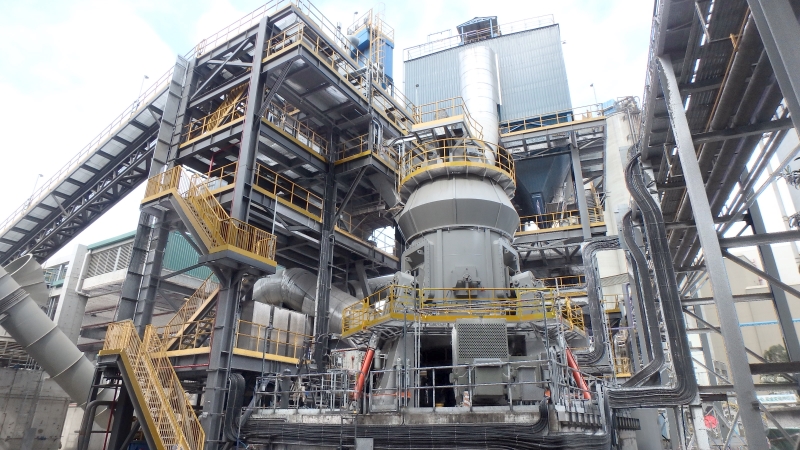The Tap Shek Kok Plant of Green Island Cement (Holdings) Limited is the only integrated cement manufacturing facility in Hong Kong. The designed capacity of cement grinding and clinker production annually are 2.5 million tonnes and 1.5 million tonnes respectively. It occupies a 16-hectare site reclaimed from the sea at Tap Shek Kok.
青洲英坭集團有限公司的踏石角廠是香港唯一的綜合水泥製造廠,水泥研磨和熟料生產的設計年產能分別為250萬噸和150萬噸。廠房佔地16公頃,是從踏石角填海得來。
The plant produces cementitious products from raw materials using the process depicted below.
下列描述從原材料到生產為水泥製品的過程。
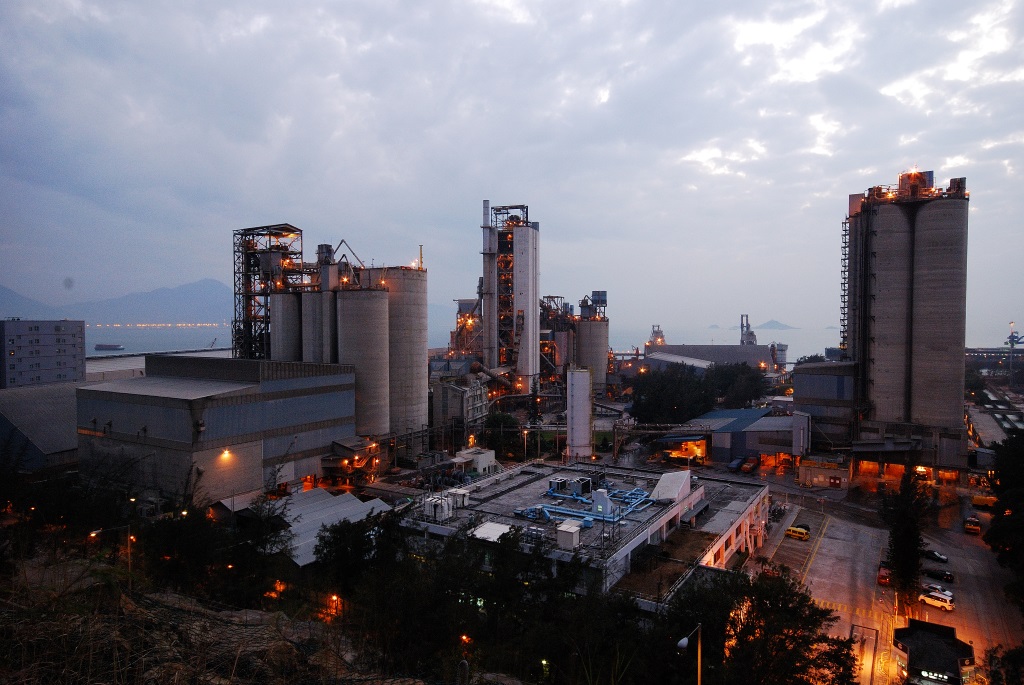
TSK plant during sunset
黃昏時段的踏石角廠面貌
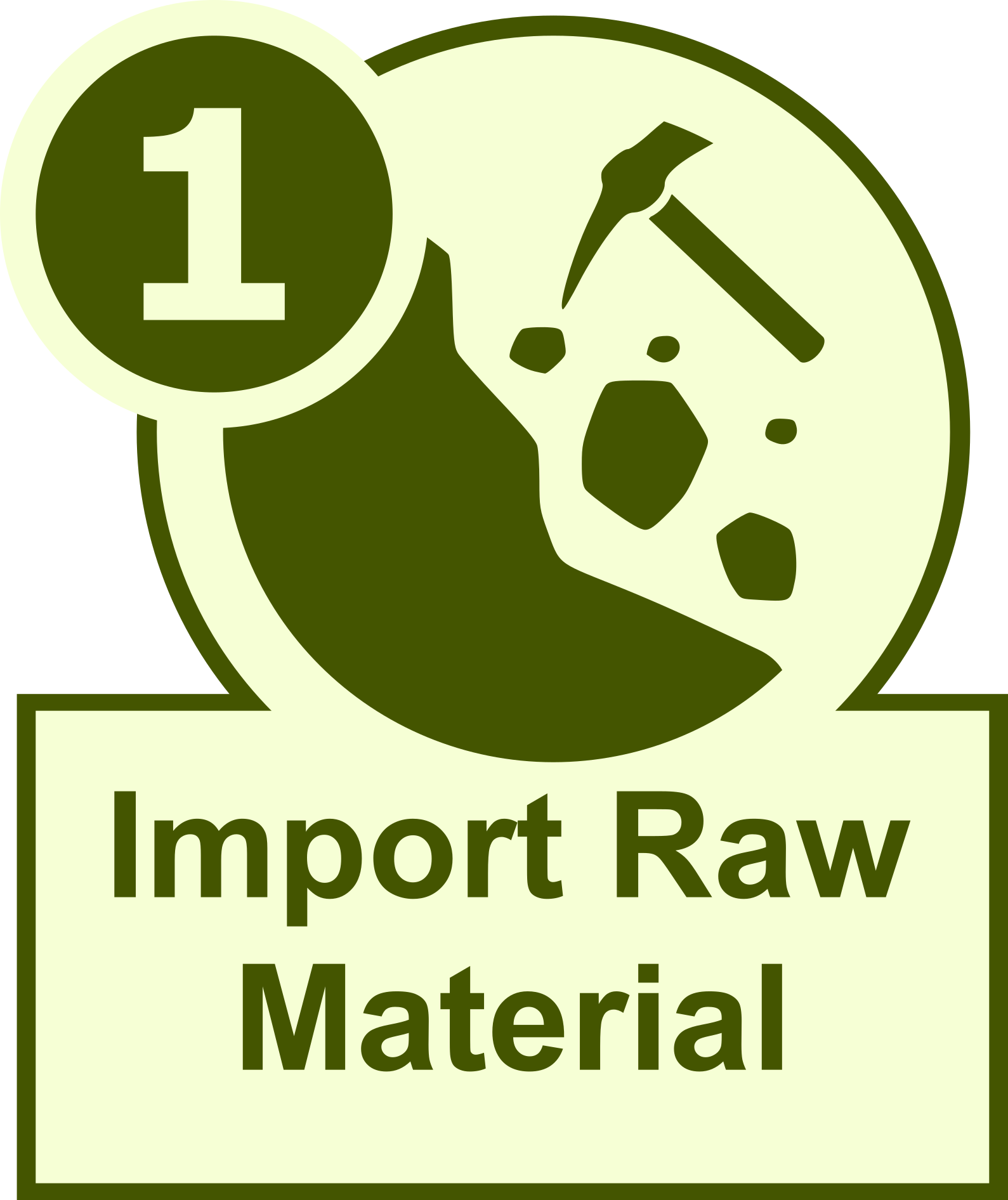

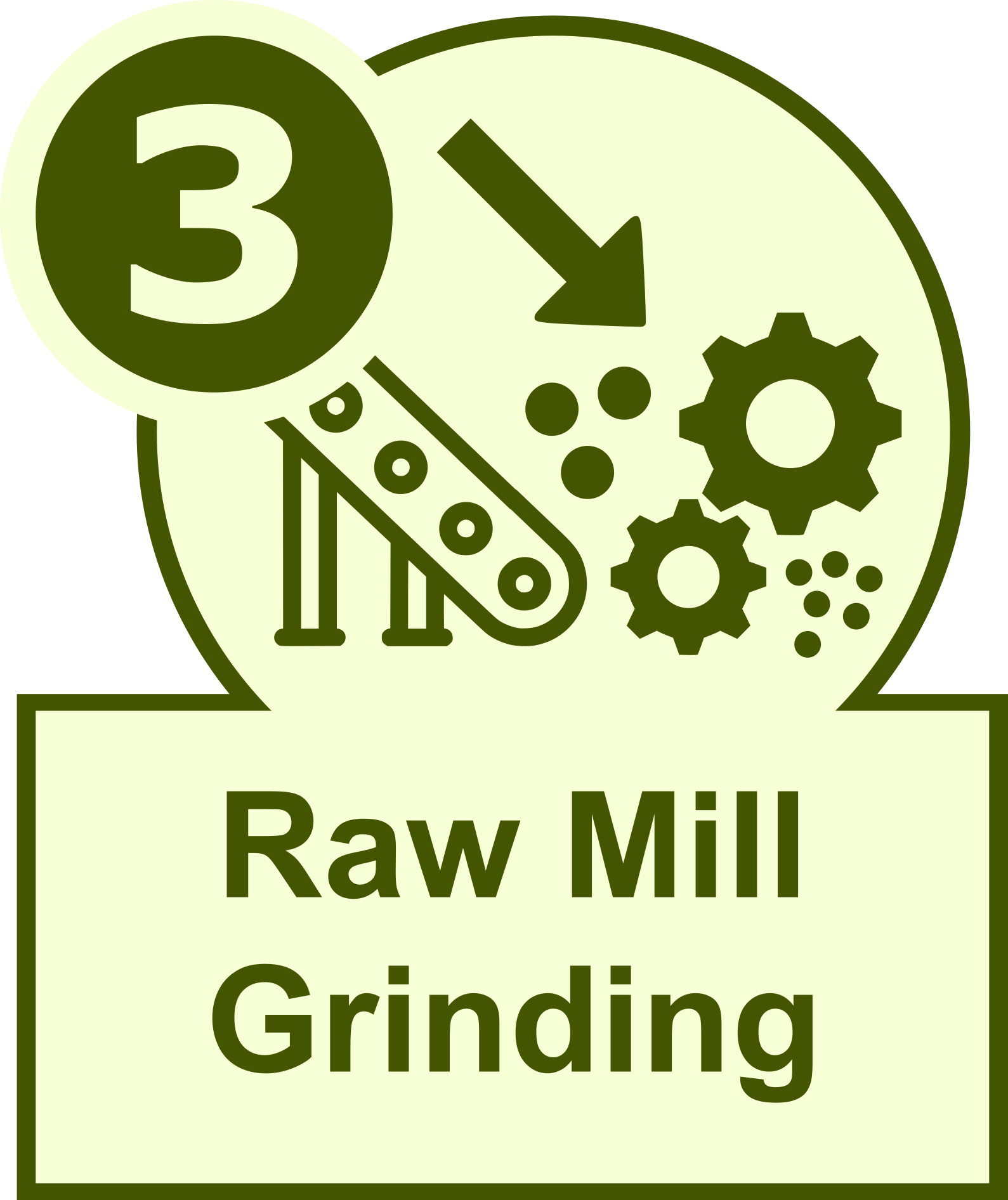
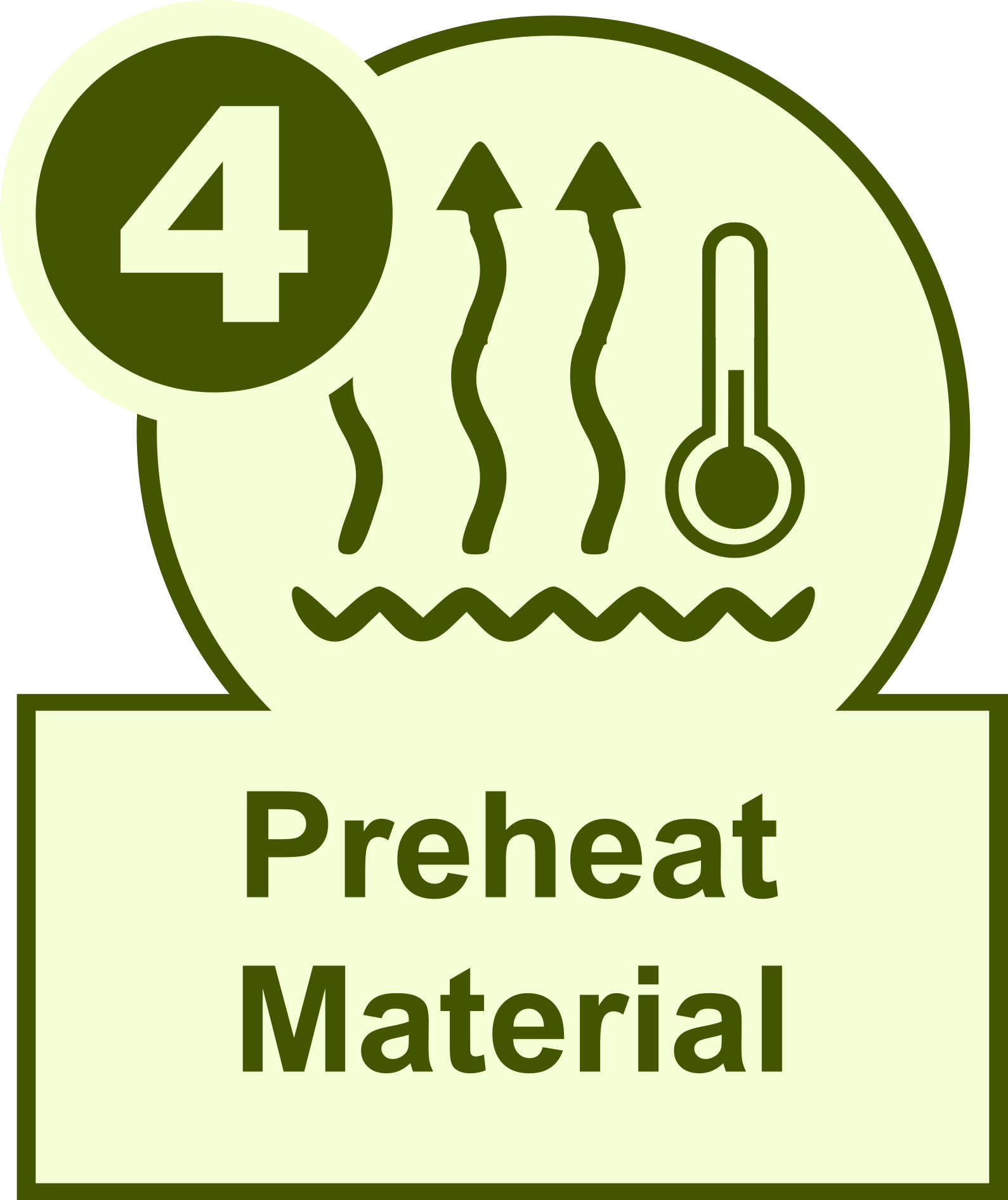
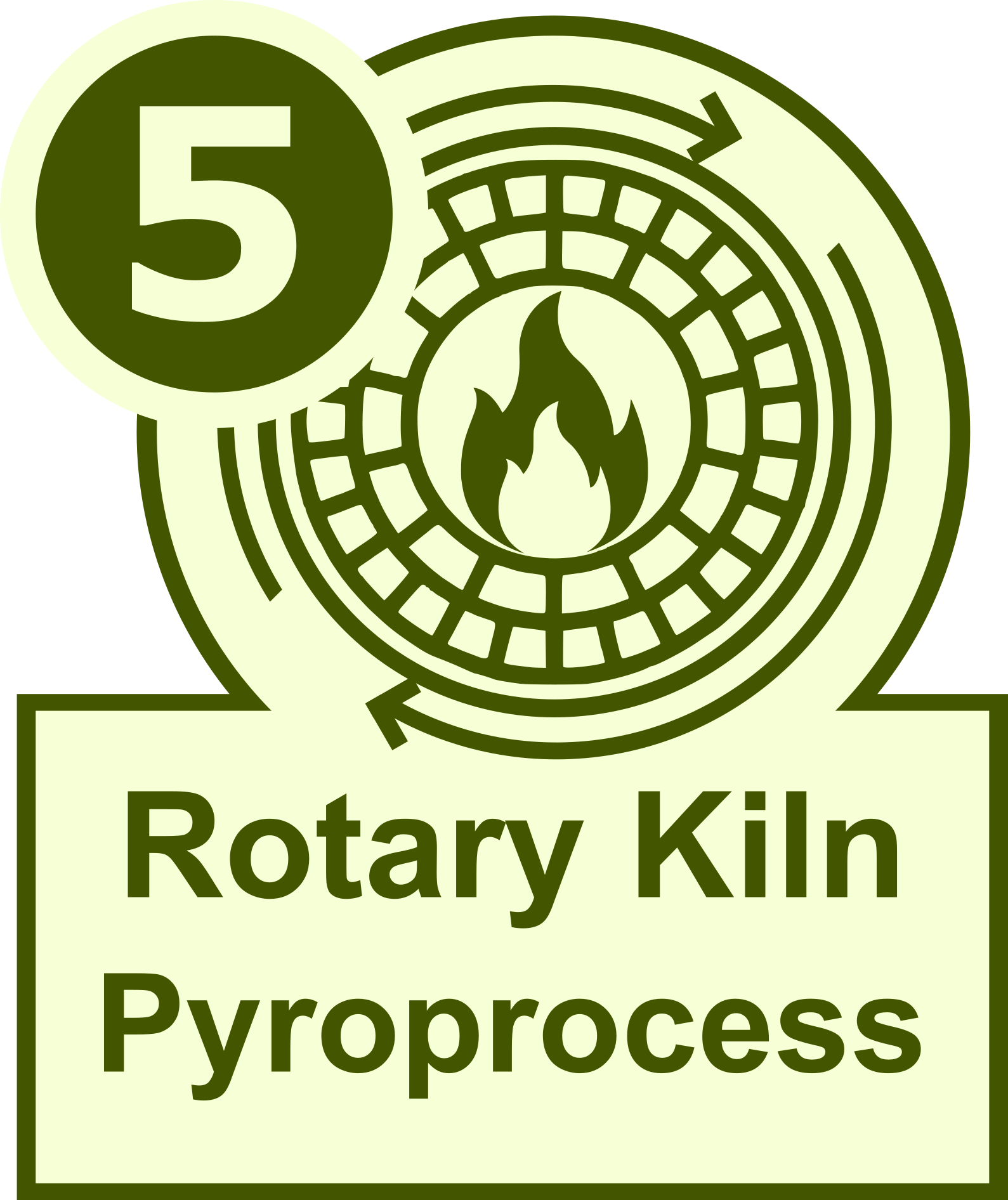


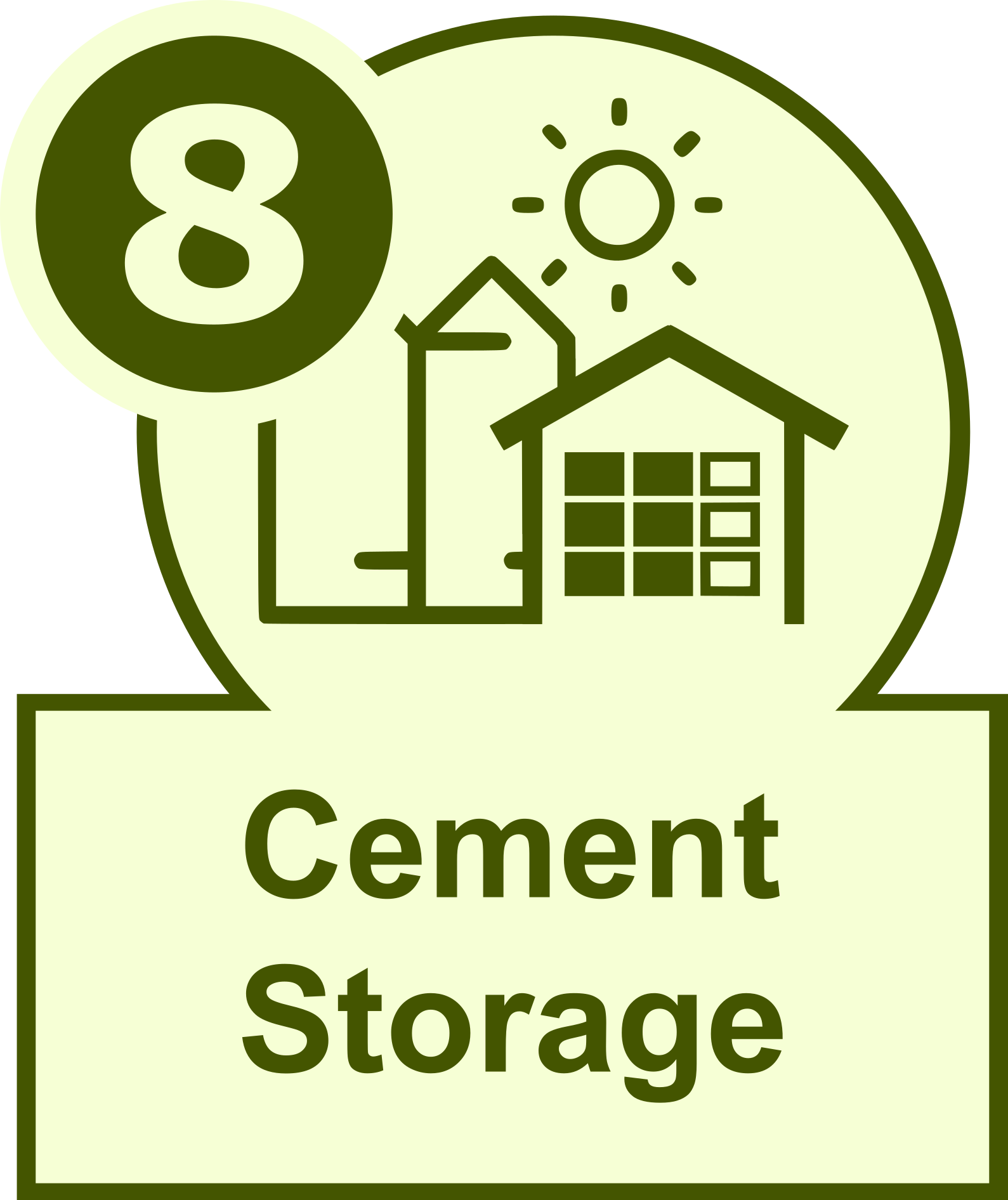

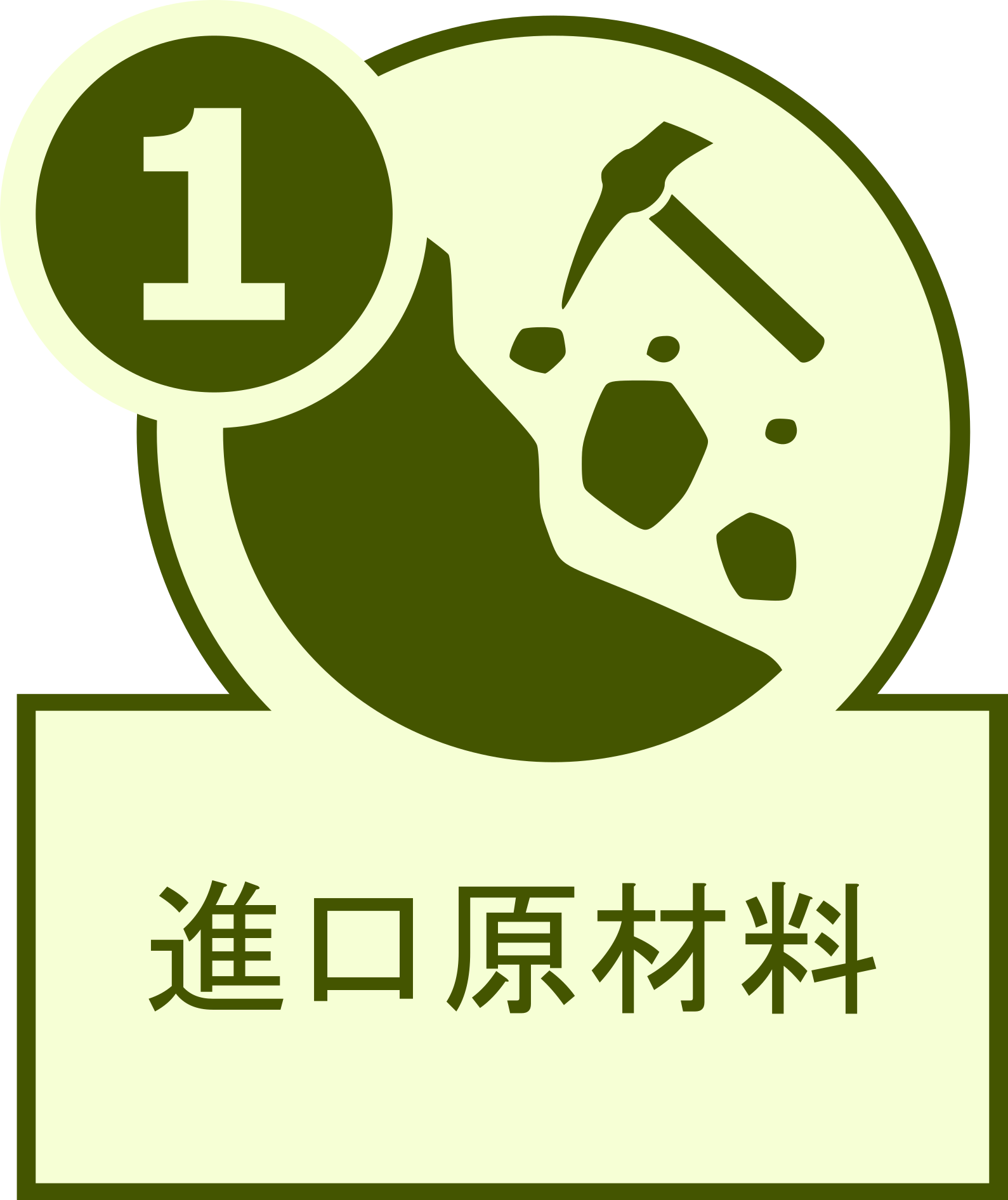
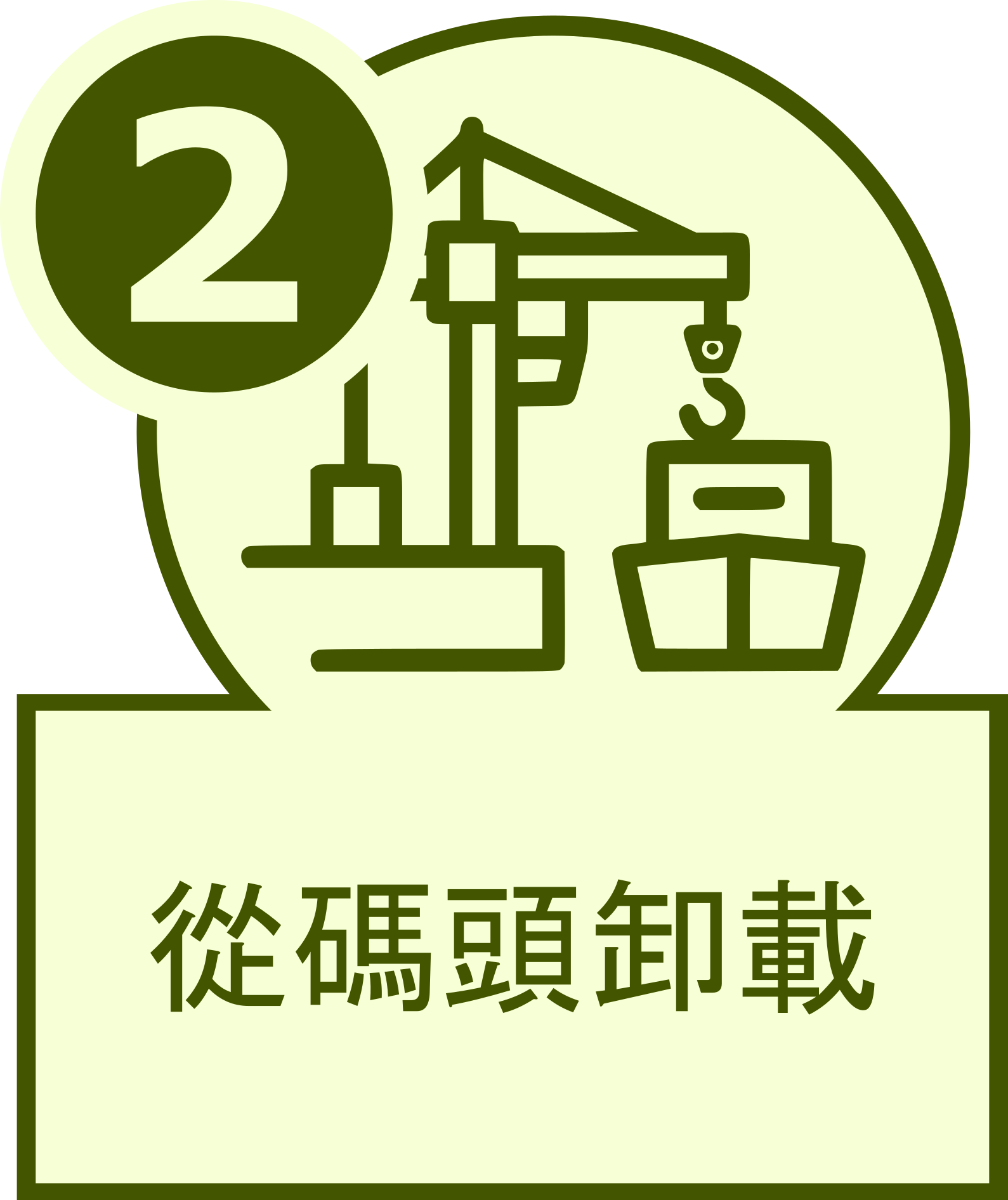
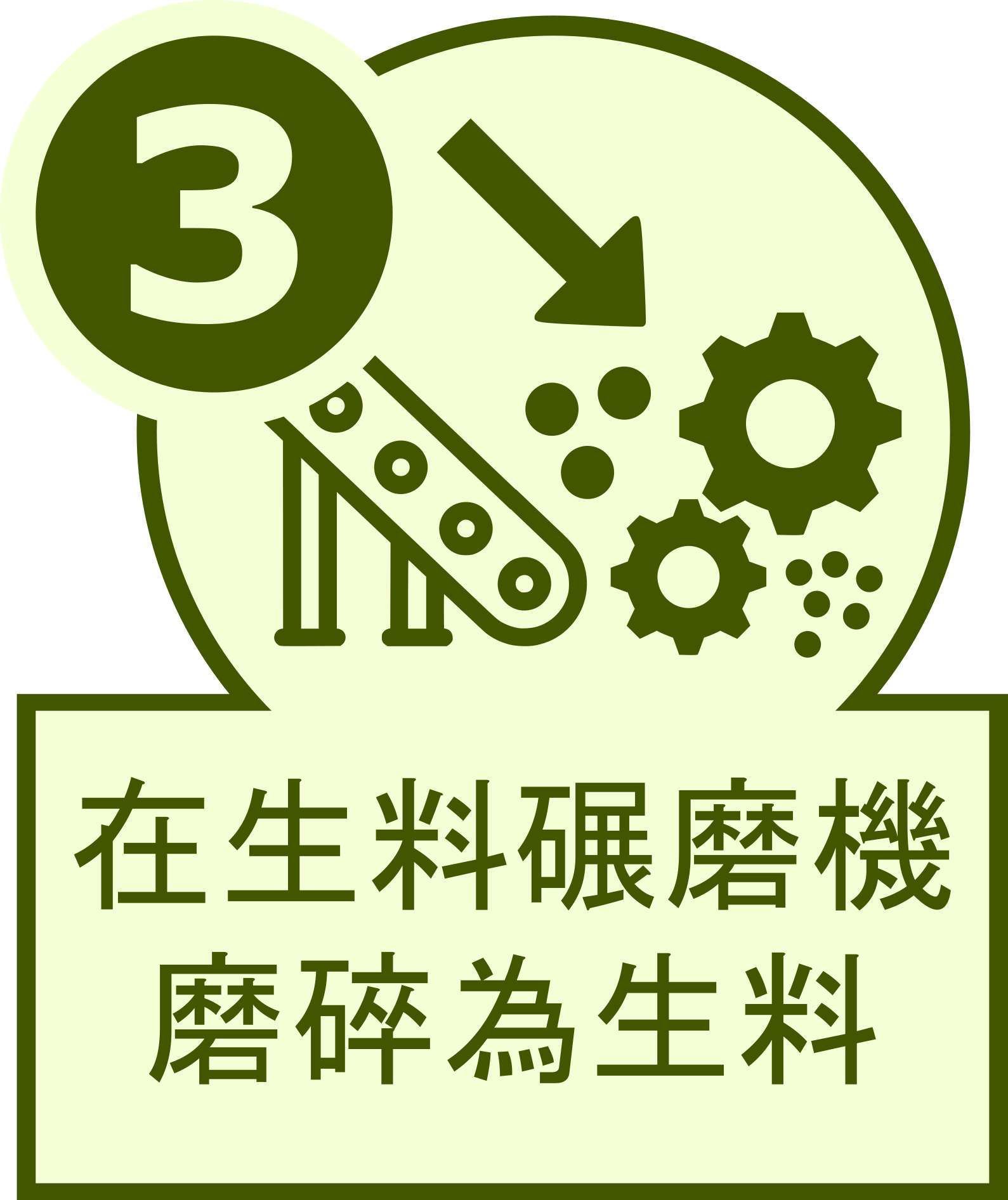
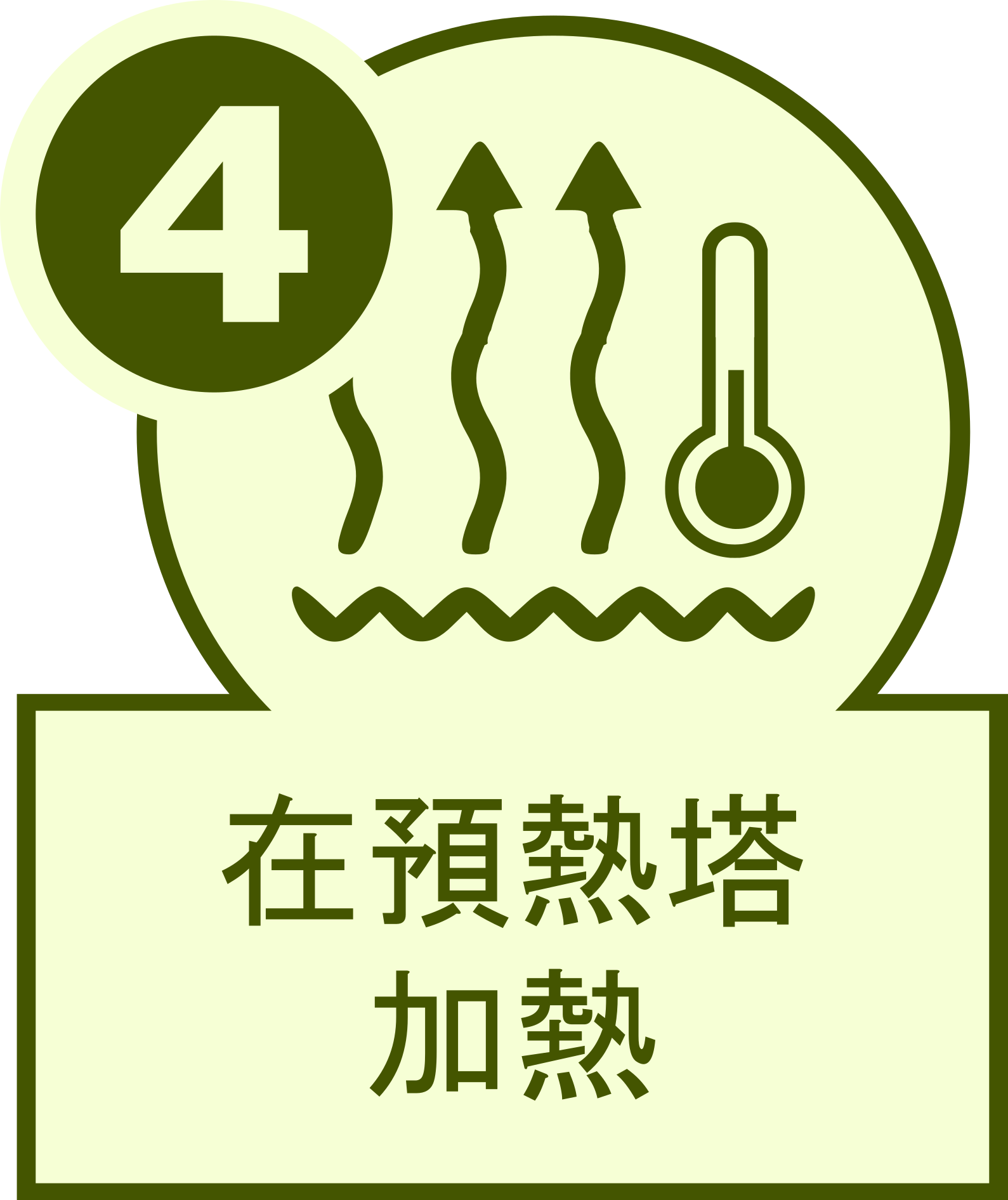
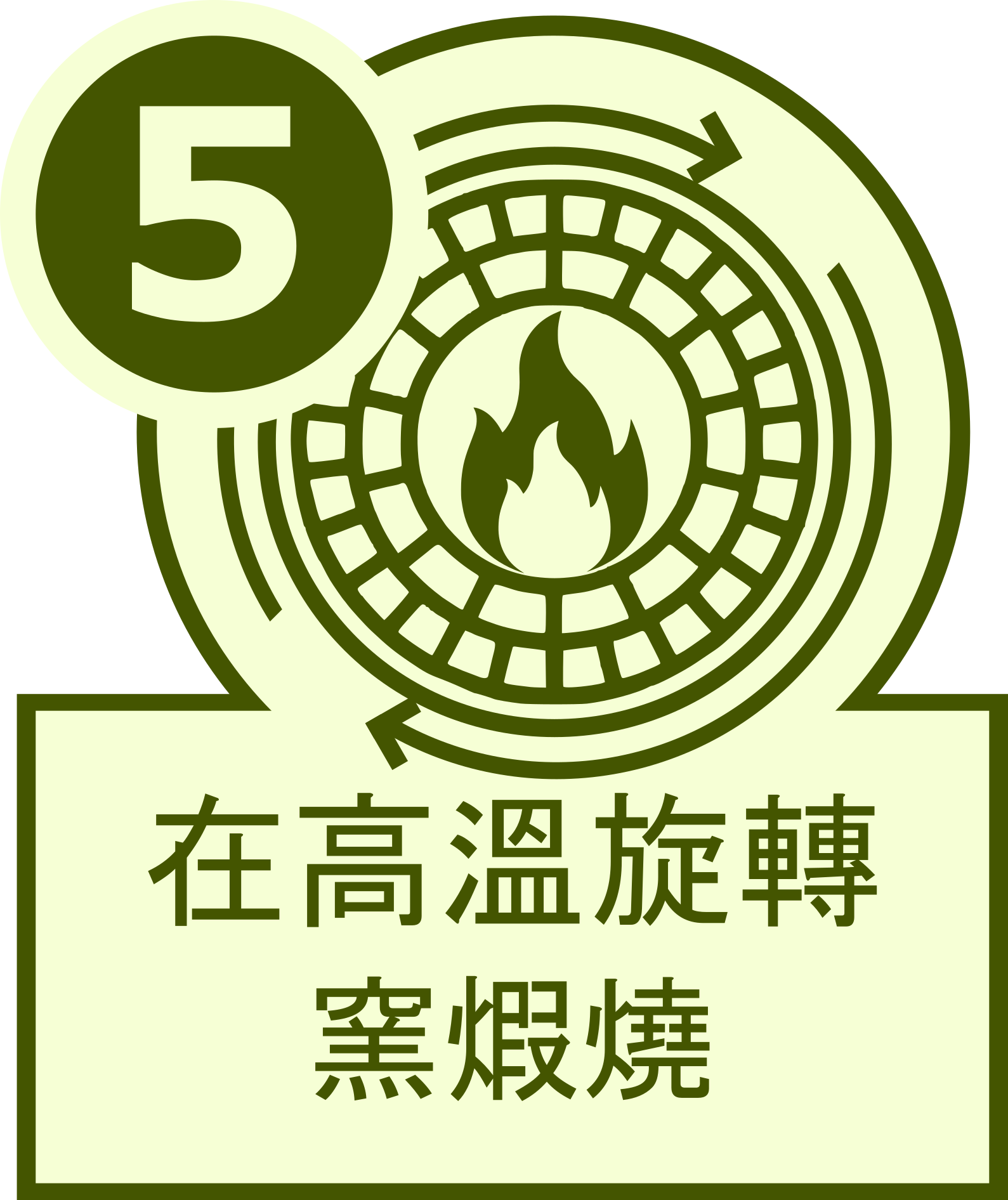
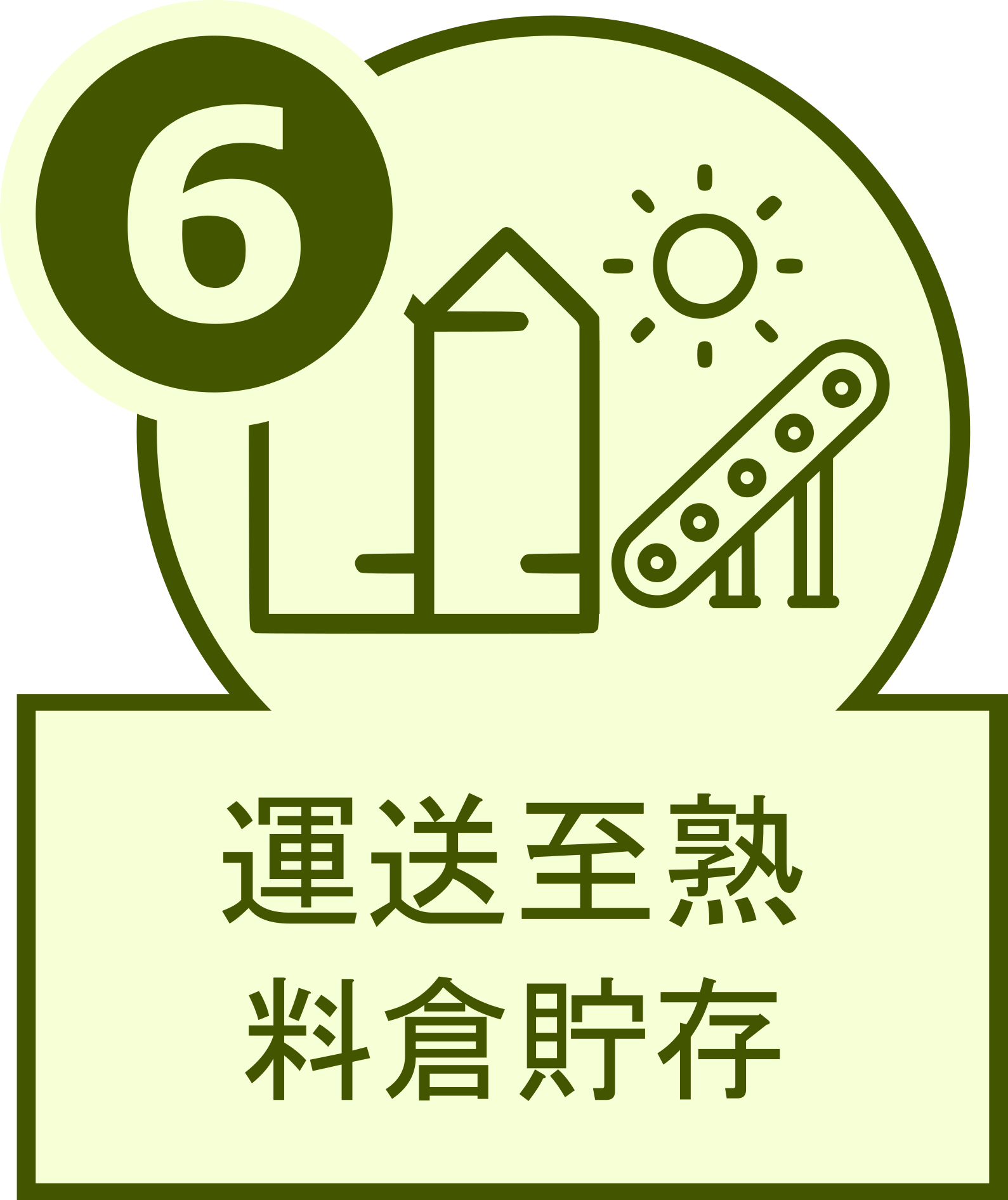
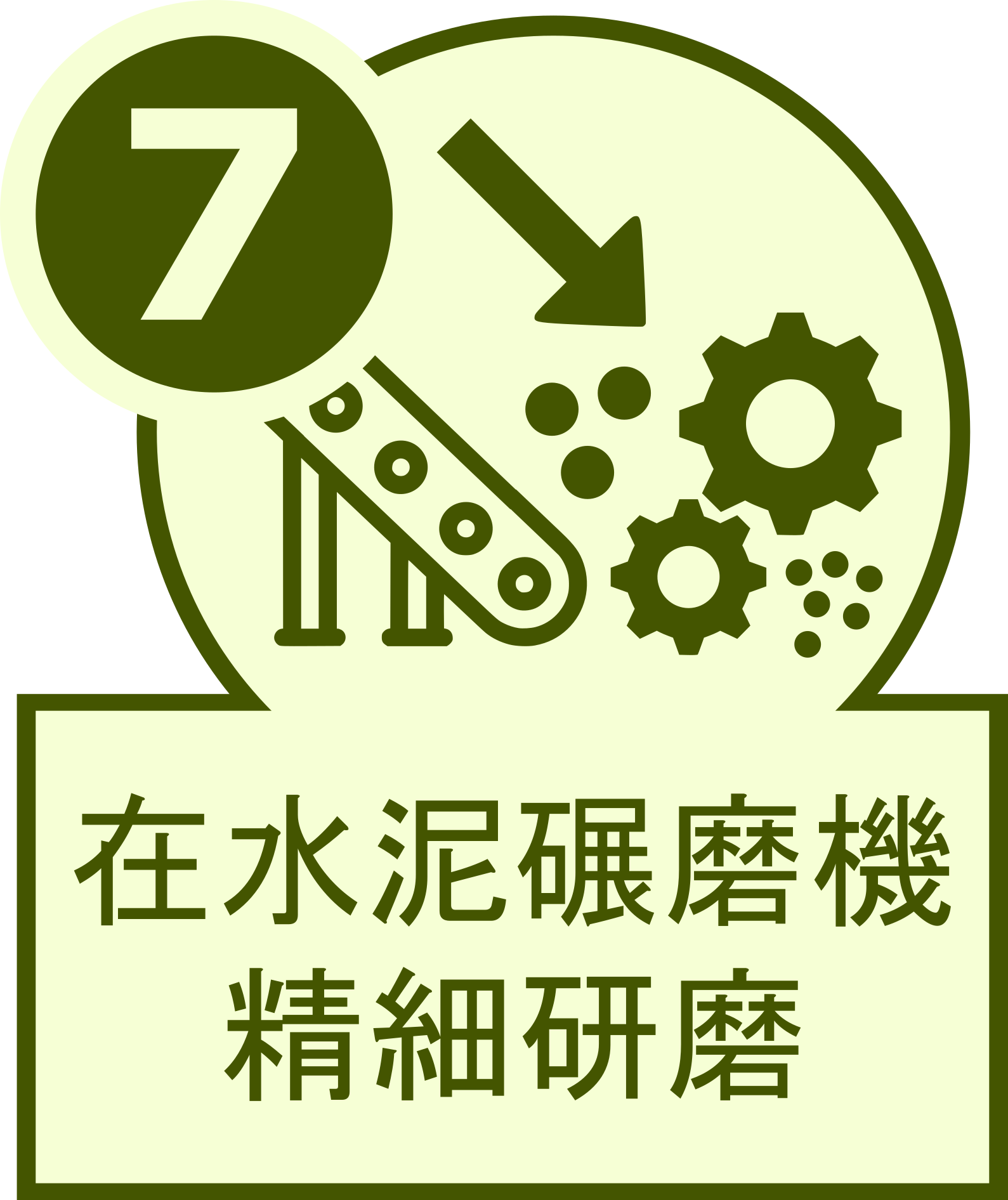

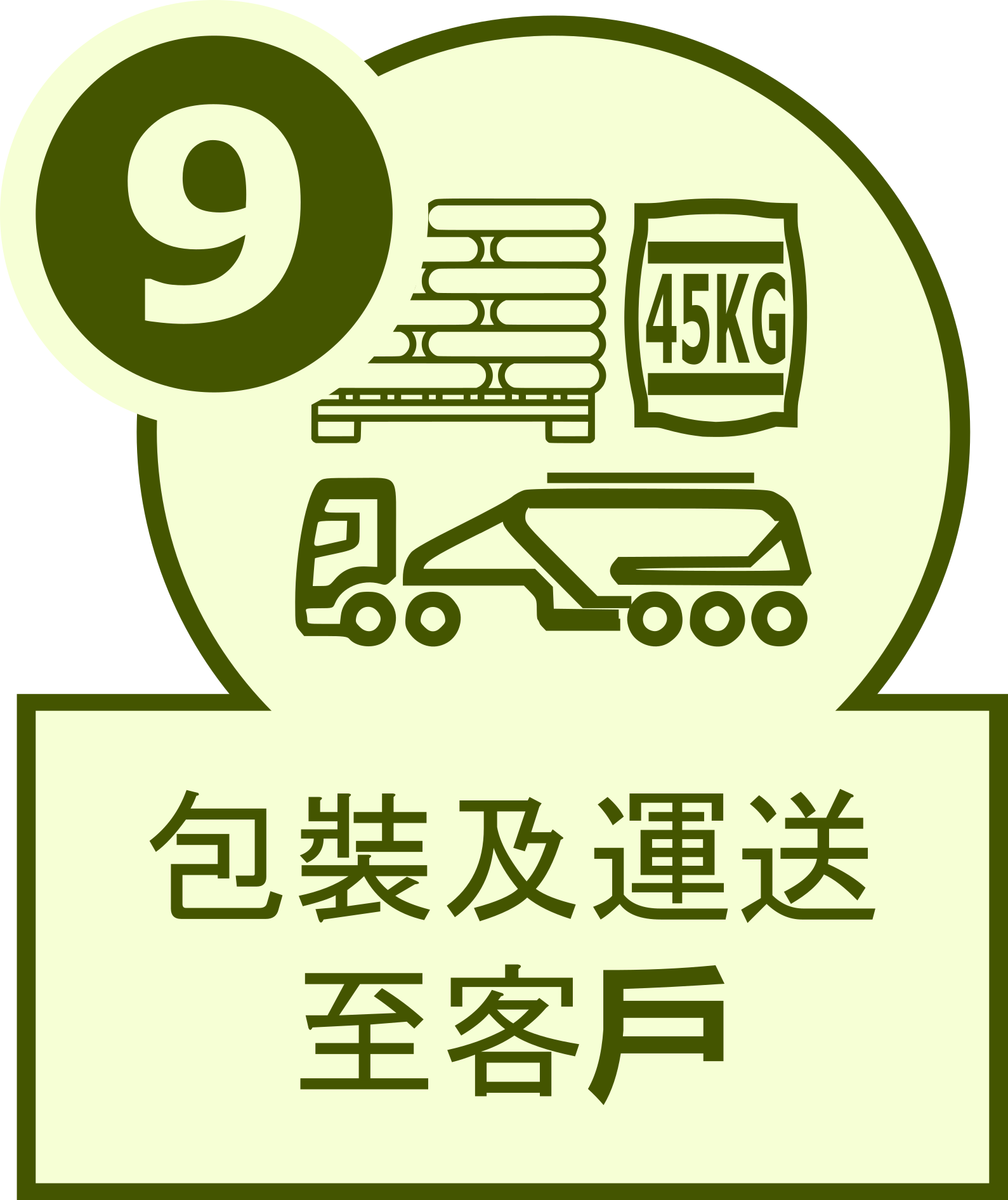
The hydraulic property of cement originates from its cement minerals (calcium silicates). The major components in terms of metal oxides are CaO, SiO2, Al2O3, and Fe2O3. In order to provide a suitable chemical composition for sintering, raw materials are either quarried or collected from other industrial processes for the cement manufacturing process. Typically, Calcium (Ca) is provided from limestone, Silicon (Si) from Sand or Flyash, Aluminum (Al) from Flyash or Clay, and Iron (Fe) from iron ore or slag.
水泥的水硬性來源於其水泥礦物(矽酸鈣)。就金屬氧化物而言,主要成分是CaO、SiO2、Al2O3和Fe2O3。為了給燒結提供合適的化學成分,水泥製造所需的原材料都是從開採所得,或收集自水泥業以外的其他工業程序。一般而言,鈣是(Ca)來自石灰石,矽(Si)來自沙子或粉煤灰,而鋁(Al)來自粉煤灰或粘土,鐵(Fe)則來自鐵礦石或礦渣。
Typically, Limestone 80% , Silica 9% , Flyash 9% , Iron 2% are dosed precisely to a predefined chemical composition, and are then fed into the process.
一般來說,將80%的石灰石、9%的二氧化矽、9%的粉煤灰、及2%的鐵,以先預定義的化學配方精準合成,然後將其送至生產程序當中。
The facility consists of the dock and the conveyor system for uploading raw materials from docked vessels to the silos for storage. It is one of the gigantic structure in the plant, feeding materials to the downstream of the production pipeline.
該設施由碼頭和輸送系統組成,用於將原材料從停靠的船隻輸送到筒倉進行儲存。它是廠內的巨型結構之一,將物料輸送到生產管道的下游。
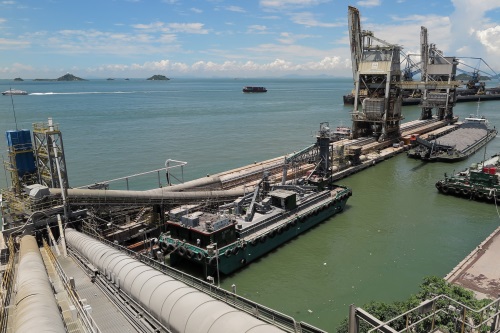
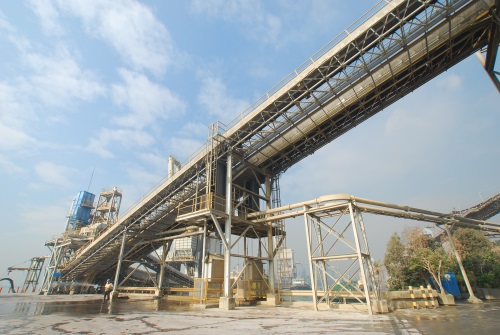
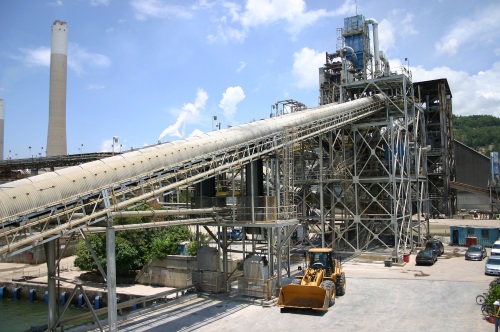
The dosed raw materials are dried and finely ground in the Raw Mill to form an intermediate product, called “raw meal”. The grinding provides an increased surface area to enhance the heat exchange in the downstream heating process.
配料後的原材料,在生料碾磨機中乾燥並進行精細研磨,形成稱為「生料」的中間產品。研磨提供了增加的表面積,以增強下游加熱過程中的熱交換效果。
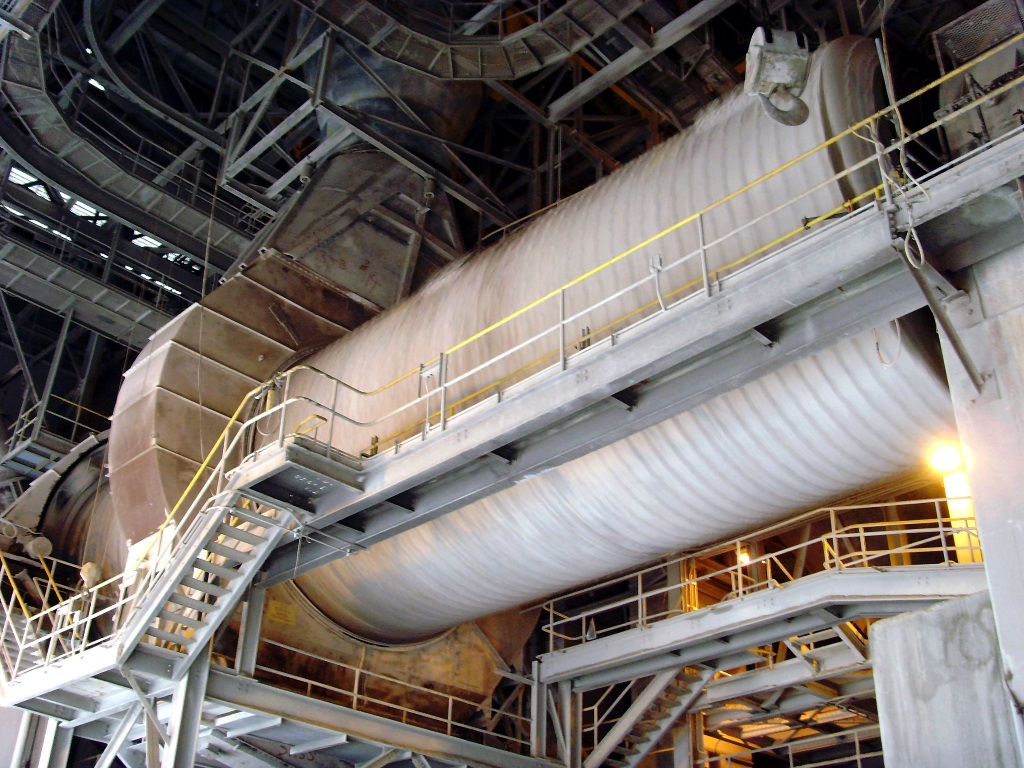
The “raw meal” is then stored in a homogenizing silo in which the chemical variation is reduced. This homogenizing process is important to stabilize the downstream sintering process as well as to provide a uniform quality product. The “raw meal” is then transferred to the Preheater Tower.
之後將「生料」儲存在均質筒倉當中,其中化學變化會減少。這種均質化過程,對於穩定下游燒結工藝,以及對於產品的質量均勻非常重要,然後將「生料」移送到預熱塔那裡。
In the Preheater, the raw meal undergoes a series of concurrent heat exchanges with the hot exhaust gas from the kiln system. The gas and material stream are separated by cyclones after each heat exchange process. The raw meal temperature increases from 80℃ to 1,000℃ within 40 seconds. The first chemical reaction also takes place in the Precalciner of the Preheater, where limestone CaCO3 is decomposed into lime (CaO).
在預熱系統中,生料與來自旋轉窯排出的熱廢氣,同時進行一系列的熱交換。在每個熱交換過程之後,氣體和材料流被旋風分離器所分離。生料溫度在40秒內,從80度(℃)提昇到1,000度(℃)。第一個化學反應也發生在預熱系統的預分解系統當中,石灰石CaCO3在這里被分解為石灰(CaO)。
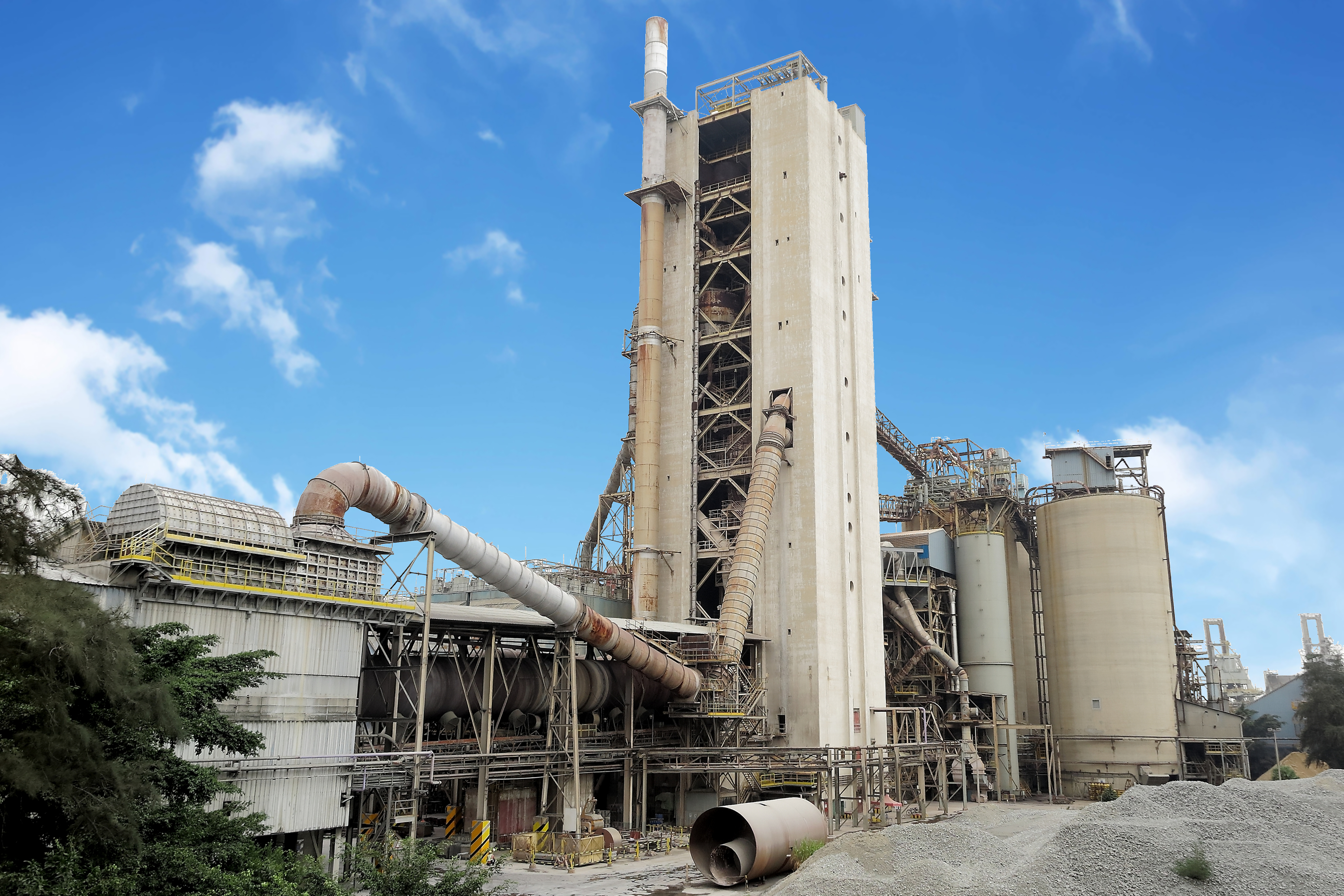
The calcinated material entering the kiln, then undergoes a long heating process. The material temperature rises from 1,000℃ to 1,450℃. Mineral matrixes of raw material are totally destroyed and cement minerals are formed at the sintering temperatures. A semi-product called “clinker” is formed. Coal and other alternative fuels are used as energy sources for the process. The ash from fuels is absorbed into the clinker matrix. The residual heat from the clinker leaving the kiln is recovered by a grate cooler to reduce the energy requirement.
將煅燒後的材料輸送入窯內,然後經過漫長的加熱過程,材料溫度會從1,000度(℃)上升到1,450度(℃)。在這種燒結溫度下,原料的礦物基質被完全破壞,形成膠結礦物,成為稱為「熟料」的半成品。煤炭和其他替代燃料被用作該過程的能源,來自燃料的灰燼被吸收到熟料基質中。熟料離開窯的餘熱由篦冷機回收,以減少能源需求。
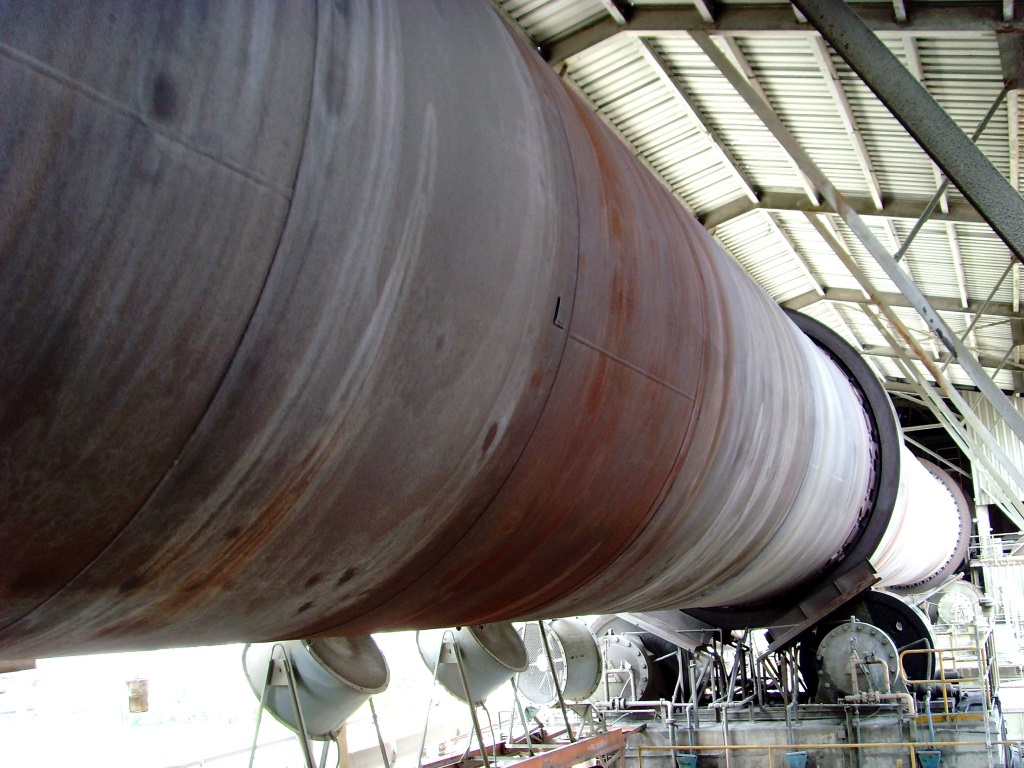
The flue gas exiting the preheater is directed to the raw mill for drying. Before it enters the electrostatic precipitator ("EP") for its final dust removal process, its temperature and humidity is regulated in a conditioning tower. This process is essential as it affects the dust collecting efficiency of the electrostatic precipitator ("EP").
離開預熱塔的煙氣被引導到生料碾磨機進行乾燥。在它進入靜電除塵器(EP)進行最後的除塵過程之前,它的溫度和濕度在調節塔中進行調節。這個過程是必不可少的,因為它會影響靜電除塵器(EP)的除塵效率。
Electrostatic precipitator is commonly used as the final dust removal device for flue gases. It consists of chambers each of which contains a series of collection plates and an overhead framework of suspended rigid high-voltage electrodes. Particles in the gas stream are charged by a high-voltage, direct current field which is generated from the discharge electrodes, suspended between the collector plates. Current applied directly to the discharge electrodes manifests a highly active and visible glow in the electrode known as the "corona". In the strong electrical field region near the electrode-emitting surface, large numbers of both positive and negative ions are formed. As the discharge electrodes have a negative polarity, the positive ions are attracted to them. Both negative and positive ions are formed in equal amounts directly in the corona region near the discharge electrodes and over 99 percent of the gas space between the discharge electrodes and the collector plates contain only negative ions. As the particles entrained in the gas stream pass through the corona field, they are bombarded by negative ions and become charged in a fraction of a second. They are then attracted to the grounded collector plates where they are collected.
靜電除塵器通常用作煙氣的最終除塵設備。它由一些腔室所組成,每個腔室都包含一系列收集板和懸掛式剛性高壓電極的架空框架。氣流中的顆粒,由懸浮在集電板之間的放電電極產生的高壓直流電場充電。直接施加到放電電極的電流在電極中表現出高度活躍和可見的輝光,稱為「電暈」。在電極發射面附近的強電場區域,形成了大量的正負離子。由於放電電極具有負極性,因此正離子被吸引到它們身上。負離子和正離子直接在放電電極附近的電暈區域形成等量,放電電極和集電極板之間超過99%的氣體空間僅含有負離子。當氣流中夾帶的粒子通過電暈場時,它們被負離子轟擊並在幾分之一秒內帶電,然後它們被吸引到接地的收集器板上,在那裡被收集起來。
Particulate matter on the collecting plates and high voltage electrodes is removed by the impact of "rapper" mechanisms. Dislodged particles from the high voltage electrodes and collector plates fall into a hopper directly below each precipitator chamber.
收集板和高壓電極上的顆粒物通過「振打器」機制的影響被去除。從高壓電極和收集板脫落的顆粒,落入每個沉澱室正下方的料斗中。
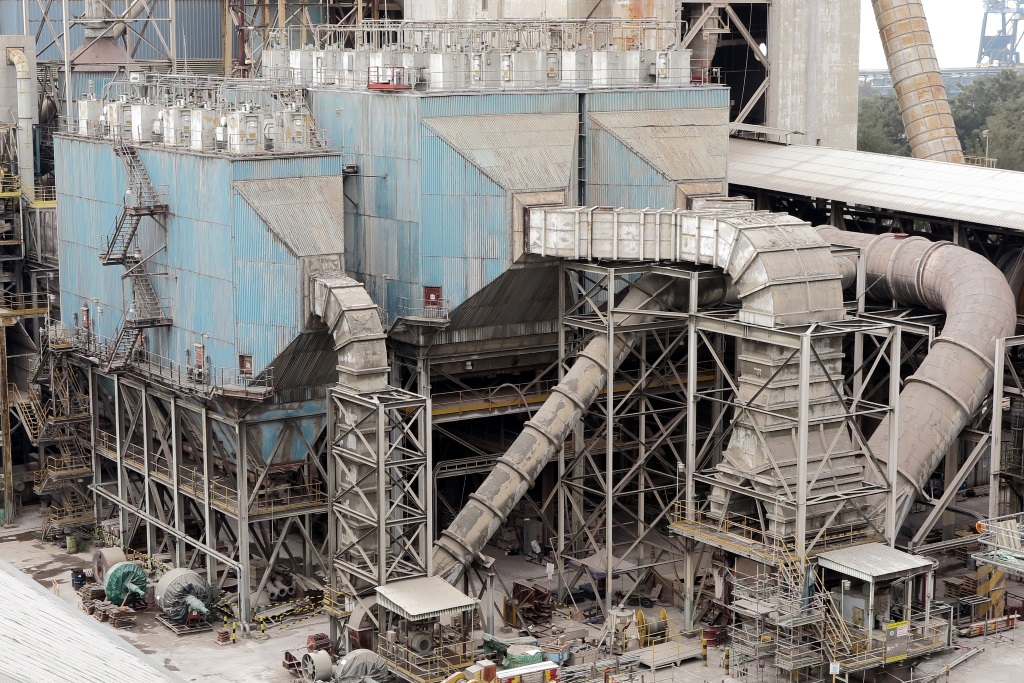
Induced draft fans (ID fan) are installed in the process to drive the gas stream movements.
在程序當中安裝了引風機(ID風機)以驅動氣流運動。
The residual heat from the clinker leaving the kiln, is recovered by a grate cooler (consisting of rows of grates). Cooling air is injected from the bottom of the grate, and is forced into the clinker which is traveling slowly on the grate. The heated air is then recycled as secondary air for combustion in the kiln, or in the Precalciner.
熟料離開窯的餘熱由篦冷機(由成排的篦子組成)回收。冷卻空氣從爐排底部注入,並被強制進入在爐排上緩慢移動的熟料。加熱的空氣然後作為二次空氣在窯爐或預分解爐當中燃燒。
The final process of cement making is called finish grinding. Clinker dosed with controlled amount of gypsum is fed into a finish mill. Typically, a finish mill is a horizontal steel tube filled with steel balls. As the tube rotates, the steel balls are lifted, tumble and crush the clinker into a super-fine powder. The particle size is controlled by a high efficiency air separator. Other additives may be added during the finish grinding process to produce specially formulated cement.
水泥製造的最後一道工序稱為精細研磨。加入受控量石膏的熟料被送入碾磨機,一般而言,碾磨機是裝有鋼球的水平鋼管。隨著管子的旋轉,鋼球被提升、翻滾並將熟料粉碾碎為超細粉末。粒度由高效空氣分離器控制,在最終研磨過程中可能會添加其他添加劑,以生產特殊配方的水泥。
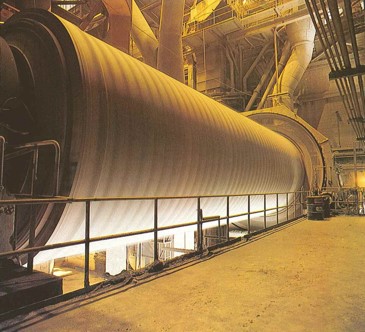
A new grinding facility commissioning in Q4 2020 at TSK Plant consists of a vertical grinding mill, feeding conveyor system, hot gas system and product conveying system. Granulated Blast-Furnace Slag is the by-product from blast furnace during steelmaking, therefore contains a much lower carbon footprint. In the system, the slag is dried and grinded to become GGBS with performance similar to cement.
踏石角廠於2020年第四季投產的新研磨設備由立式研磨機、進料輸送系統、熱氣系統和產品輸送系統組成。顆粒狀高爐渣是煉鋼過程中高爐的副產品,因此碳足跡要相對少很多。在該系統中,礦渣被乾燥和研磨成GGBS,產品性能跟水泥類似。
